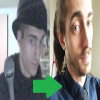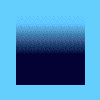The long-conceived but only just-recently planned-out and soon-to-be-implemented PrintDrug technique achieves order-of-magnitude decreases in cost and labor-time while increasing both dosing precision and convenience for the many different drugs and combinations of drugs it can print out onto edible or transdermal papers. It can be implemented by anyone for the cost of an off-the-shelf bubblejet printer and a few other simple easy-to-buy items. Total cost for the system is between $100 and $200 - mostly depending on whether a cheap used bubblejet printer or fancy new one is purchased.
My first use of this system will be to create 30-dose premeasured sheets of 7mg Dianabol doses for my morning Androgen Replacement Therapy, thus cutting my 1mg digiscale use and the time that takes by a third. The other two doses are powder for intranasal administration and so cannot be printed.
There are three primary reasons to use the new process of bubblejet printing for dosing:
1. Bubblejets create very precise and repeatable deposits of ink with a precision of less than 19 microliters per micronozzle.
2. Printed paper is easily mailable in standard envelopes. Legally, US Lettermail cannot be opened without a warrant:
Can Postal Inspectors open mail if they feel it may contain something illegal?
"First-Class letters and parcels are protected against search and seizure under the Fourth Amendment to the Constitution, and, as such, cannot be opened without a search warrant. If there is probable cause to believe the contents of a First-Class letter or parcel violate federal law, Postal Inspectors can obtain a search warrant to open the mailpiece. Other classes of mail do not contain private correspondence, and therefore may be opened without a warrant."
3. Printing is very fast and convenient, allowing a single person to reliably and repeatably produce thousands or tens of thousands of dose units per day with little labor.
Unlike capsules or tablets, sheets of paper cannot be felt as something of interest from outside the envelope and even if opened it is hard to tell what the item really is.
The PrintDrug process works as follows:
0. All handling of the paper from start to finish is done with rubber-gloved hands to avoid leaving either prints or DNA.
1. A cheap used bubblejet printer - likely a Canon - will be purchased.
2. Refillable, sponge-free chipped cartridges will be purchased from eBay. Here's an example for only U$13.00: Non-OEM Refillable Ink Cartridge For EPSON R200 R220 R300 R320 R330 R340. These cartridges are indefinitely refillable due to the special chip they contain which always reports them as 'full' to the driver software. Furthermore, they have handy rubber-capped refill holes for easy refilling.
3. All cartridges will be left empty except black and yellow. The black is used to print the empty guide-outlines for each dose-square. The yellow cartridge is used to print the drug-infused ink. Why did I choose the yellow cartridge? There's a special reason. Assuming the use of a CMYK cartridgeset, the yellow and only the yellow cartridge offers perfect RGB -> CMYK software colorspace conversion. Even 'black' is sometimes made synthetically by combining colors. Yellow is 100% red plus 100% green - a direct conversion from RGB to CMYK colorspaces. It never contains any cyan or magenta. This is required to ensure that the full dynamic range of color-to-ink translation is available and also required to insure that no other cartridges' output is used by the printer. Cyan is a non-integral mix of various colors and so is magenta. Software colorspace conversion varies by driver and printer and is too difficult to reverse-engineer and will not be consistent between driver softwares and printer hardwares.
4. The black cartridge is filled with normal or edible black ink.
5. The yellow cartridge is filled with 99% or 70% Isopropyl Alcohol - whichever works best - and about two grams of pure Dianabol powder. The fat-soluble powder will dissolve after a few shakes in the alcohol. A few drops of edible black or blue ink is added so the dose-squares can be seen. This extra ink will leave a microgram residue per square, slightly off-calibrating the final weighed dose but by less than 1%.
6. All cartridges are loaded into the bubblejet printer.
7. A sheet of edible rice 8.5" x 11" paper is loaded into the bubblejet's tray. A pack of 25 sheets of this size costs only $18.50 or $0.74 each. Each sheet can hold a month of daily doses.
8. Image 1 - the first of two losslessly-compressed PNG images - is created on my computer. An image of 5 x 6 black-outlined squares. I use Microsoft Word's AutoShapes to make them quick and easy. The preview image below is linked to a free copy of the fullsize DOC file:
Image 1: 6 x 5 Array of Black Outline Squares
9. Image 1 is printed onto the sheet of rice paper.
10. The sheet with only Image 1 is allowed to dry completely.
11. The sheet with only Image 1 is weighed using my 1mg-accurate digiscale and the weight recorded.
12. The sheet with only Image 1 is reloaded into the printer's input tray.
13. Image 2 - a PNG image of solid yellow squares - is printed onto the sheet. The image is of yellow squares but the yellow cartridge contains only the drug, solvent and a few drops of black or blue edible ink so that the dose-squares are observable on the final printed paper. The preview image below is linked to a free copy of the fullsize DOC file:
Image 2: 6 x 5 Array of Yellow Squares
14. After printing, the sheet containing both Image 1 and Image 2 is allowed to dry. Due to the solvent used in the yellow tank it dries quickly - fifteen minutes max. I leave it for an hour to make dead sure all the solvent is evaporated. The final sheet of paper looks like this:

Final Sheet of Paper as Seen After Printing
10. The sheet of paper with both Image 1 and Image 2 printed onto it is re-weighed on my 1mg-accurate digiscale.
11. The weight of the sheet before it had Image 2 printed onto it is subtracted from the weight of the paper after it has both images printed onto it. All solvents must be fully evaporated before this is done.
12. The weight difference is the number of milligrams of drug deposited plus the micrograms of the couple drops of edible black or blue tracer ink added to the yellow tank to allow the dose-squares to be visible. It's not necessary to add tracer-ink and in such a case the dose-squares themselves are invisible with only the black outlines giving a clue as to where the doses are located on the sheet. The tracer ink's weight is less than 1% of the drug's weight and can be disregarded.
13. The weight difference in milligrams is divided by the number of squares - 30 in this case. This tells me how many milligrams of drug is in each square.
14. The page is run through the bubblejet one final time with the number itself - minus any other giveaway indicators such as 'mg' that would make the paper's contents obvious - printed in edible or inedible black ink onto the top of the sheet or above/below each square. This final printing rather than hand-writing the number is chosen to prevent both DNA contamination and the possibility of handwriting recognition if the paper is inspected by governments in-transit.
15. The paper can be quickly sliced row-by-row and column-by-column using a cheap paper-cutter: eBay: A4 TO B7 Size Paper Photo Cutter Guillotine Metal Trimmer Base 12 Sheets W Grid for $35.99. This tool produces paper squares with incomparable speed and efficiency: massloads of paper-square doses can be cut at once since these guillotine cutters can slice 5-10 sheets at a time. Alternatively, the paper can simply be folded and placed into the envelope.
16. The PrintDrug technique is suitable for use with any drug that dissolves in either water or alcohol and is potent enough to fit on the squares: I guess the usable dose-range per square as 1mcg - 10mg. Dianabol doses of 7mg will fit nicely into decently-small squares. So will LSD or many other powerful psychochemicals including Sunifiram and Unifiram.
17. The dose of the drug deposited on each square can easily be varied by adjusting the color saturation of the PNG image's yellow squares.
18. Using a RGB -> CMYK math routine, the other color ink tanks can also be used for other drugs, allowing multiple different drugs to be deposited in varying ratios on each individual square. A month's hormone replacement for a woman with each square containing a slightly different ratio of two or more different drugs.
19. With differently-colored edible tracer inks in each tank, the ratios of all the drugs can be observed on the final printed page by the colour of each square. For example, orally bioavailable Ethinyl Estradiol could be loaded into Tank 2 with a tracer of red ink while the orally-bioavailable androgen Dianabol could be loaded into Tank 3 with blue ink. The colour of the squares in the PNG image could be varied between red to blue, transiting some nice shades of purples in-between. Those nice shades will be the Female/Male hormone ratio on the final drug-infused printed squares. Thus a customized daily variance of drug ratios can easily be achieved for cases such as a woman's monthly hormonal cycle.
20. The recipient receives a letter without return address or even name - just destination address. He opens it, takes out a square of edible rice-paper infused with drug, and either eats it or puts it under his tongue for sublingual administration. It's easy to hold the rice-paper square under the tongue and the rice starch dissolves slowly to provide steady absorption by the sublingual bed of blood-vessels.
21. Using a special additive to the drug-containing yellow tank that turn sticky when the solvent evaporates, the squares can be made sticky. The tank also contains added DMSO to allow the drug to penetrate human skin. The squares are cut out by the recipient and stuck on his skin where they adhere and deliver the drug as transdermal patches.
22. To customize the dosing per-patient all they physician needs to do is email a new PNG image to the patient each month. The patient simply prints the image on their bubblejet printer.
The total cost for my implementation of the PrintDrug system is less than $100 for everything excluding the drug itself - provided a working used bubblejet printer can be purchased for $25 - $45. There's tons of them in every used store because the chip-sabotaged cartridges run out and cannot be refilled, the printer itself isn't worth using because it's cheaper to buy an entirely new printer with fresh cartridges. Razor-and-blades sales model.
Edited by Isochroma-Reborn, 22 September 2013 - 04:13 AM.

















































